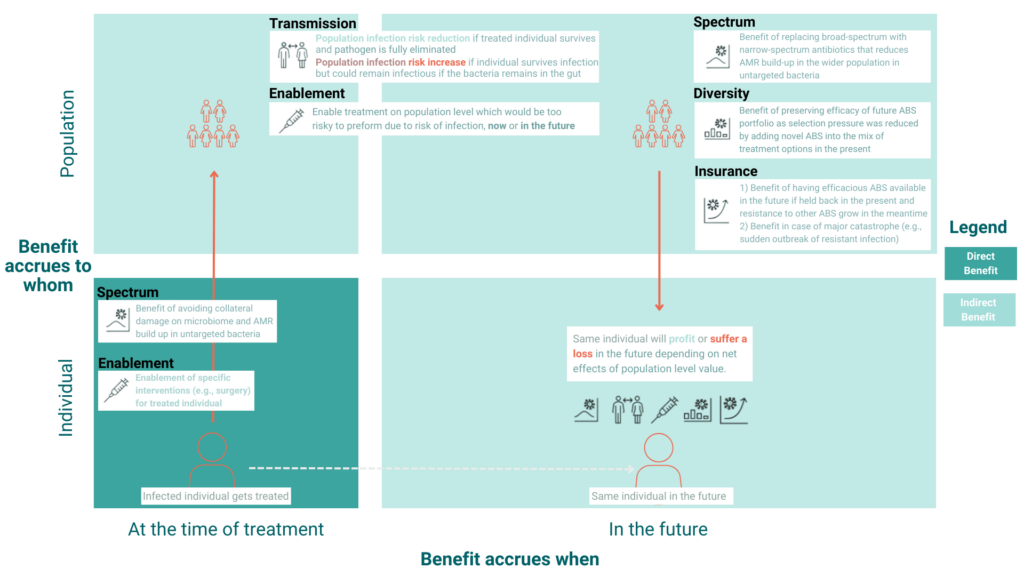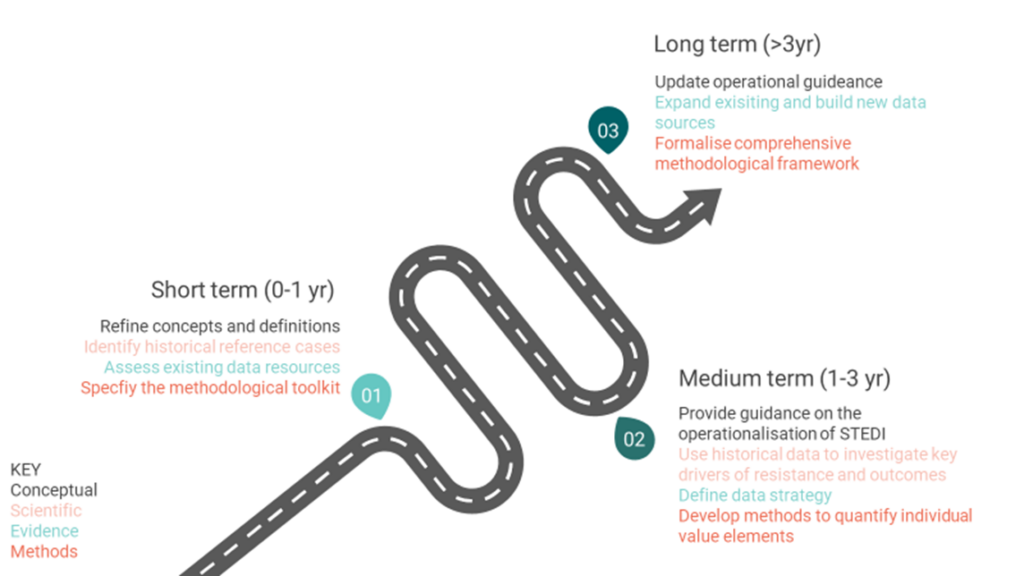Sign up to our newsletter Subscribe
Analysing Global Immunisation Expenditure

As one of the backbones of modern medicine, antibiotics are a critical component of healthcare, resolving infection and limiting its spread whilst also ensuring that medical procedures, including chemotherapy and surgery, can continue and advance. Despite their vital role, their true value often extends beyond what is captured during traditional Health Technology Assessment (HTA).
The STEDI framework, encompassing five value elements – Spectrum, Transmission, Enablement, Diversity, and Insurance – offers a comprehensive approach to capturing the broader value of antibiotics. However, challenges and uncertainties affect its successful application.
This report outlines a research roadmap to overcome these hurdles in three phases. Ultimately, it paves the way toward a fully integrated assessment of the STEDI framework based on the widely established HTA approach to capture the outcomes in quality-adjusted life years (QALYs) in the long run.
STEDI is crucial for setting the right incentive for an active antibiotic pipeline, but substantial sources of uncertainty hinder its successful application to date. An antibiotic’s broader value can accrue to the treated individual or the wider population and accumulate during treatment or further into the future. Thus, when conceptualising the different value elements, it may be helpful to consider to whom the benefits accrue and when they accrue.
Figure 1 visualises these distinct benefits by separating the direct benefit (benefit to the individual treated at the time of treatment) from the indirect benefit (externality to a wider population or future benefit to the individual). Only a few STEDI elements have a direct benefit, but population effects today and in the future feedback to the treated individual later in life assuming their survival. In addition, some elements have multiple mechanisms (e.g., spectrum value), making their conceptual separation even more challenging.

Figure 1 STEDI – Direct and indirect effects of the operationalisation of the STEDI framework. Source: OHE
To fully realise the potential of the STEDI framework, the report suggests a research roadmap in three phases:

Figure 2 Roadmap to resolve uncertainties in estimating STEDI value. Source: OHE
The report was commissioned and funded by The Association of the British Pharmaceutical Industry (ABPI).
Capturing the Broader Value of Antibiotics
